What Was It Like to Ration in DC during World War II?
Have you recently visited the DuPont Circle Farmers Market and picked up some fresh fruits and vegetables to make a delicious homemade meal? Or how about spending a relaxing evening at your favorite DC restaurant, enjoying the ambiance and delectable food? Such outings are not out of the ordinary in today’s day and age,but that has not been the case for all Washingtonians throughout the city’s over 200 year history. One instance of widespread food insecurity occurred during the twentieth-century. From 1942 to 1945, Americans navigated food shortages due to a process known as rationing as a result of World War II.
As a means of exploring rationing in DC during World War II, we’re doing something a little different from the history articles we usually publish here on Boundary Stones. Instead of telling a story about an actual real-life individual from the past, we’ve created a composite character, which is a fictional person heavily based on historical evidence.
You will be placed into the shoes of a thirty-year-old white mother of two, who lives on Florida Avenue near DuPont Circle. After her husband was drafted into the army in 1942, she took a stenographer class at night to supplement her family’s income and do her patriotic duty to aid the war effort. By the time this fictional day-in-the-life piece takes place, September 5, 1943, she has been working as a secretary for the War Department for several months.
* * *
The late summer light filters through the bedroom window of your row house early on this Sunday morning. You pad down the creaky wooden floors of the second floor to wake up your six-year-old daughter, Kate, and four-year-old son, Tommy, from their shared room. You know they won’t be happy spending the entire day running errands, but since your husband left for the war, you have no one to watch them. Although you do not want to crawl out of the comfort of your bed, you have too much to do on your precious day off.
It is time for breakfast, and you open the refrigerator to see what meager selections you can serve to Tommy and Kate. Although you want to make a hearty breakfast, you have not seen eggs in a few weeks at the various markets you visit.[1] So instead, you open up the box of this new ready-to-eat oat cereal, Cheeri Oats.[2] The kids seem to like it, so one crisis averted.
The next task of the day to tackle is grocery shopping. You dread this task every week as you must go to multiple stores to buy everything on your list. You grab the three ration booklets from the cabinet in the kitchen and check to see how many red and blue stamps you have left. Because it is the beginning of the month, you still have nearly all your ration points left, except for the three blue produce stamps you spent on the bag of potatoes.[3] In the last few months, you have rarely seen these starchy balls of goodness anywhere in DC. So, when you spotted a sign in the window of a store advertising potatoes in stock, you quickly ran home to grab your ration books before others bought them all up.[4]
With children in tow, you set out for the first store a few blocks from your house. You snap up a few pieces of pork, some chicken, and a smattering of vegetables that you cannot grow in your victory garden. You have not seen beef in quite some time as people tend to like it more than pork, but you are grateful to find any sort of meat at all on your first try.
Tomorrow is Tommy’s birthday and all he has been asking for over the last month is a cake. You know a cake needs a few weeks worth of rationed sugar. That means black coffee for you, but you are happy to do it if it means putting a smile on your son’s face.[5] You’ve already been saving sugar up for the last month or so, but you will need to use all of your ration points from this ten-day period to make the cake and the icing.[6] You find a small corner store in Foggy Bottom that has plenty of sugar. After checking out with the clerk, where it feels like you are giving away not only all your ration points but also all your money, you step back into the swampy late summer DC day. As you leave, you see Tommy and Kate with their faces pressed up against the candy case, vibrantly exclaiming what type of sweet treat they would buy if only they had a nickel. Fortunately, one of the few things the government had not rationed was candy.[7] Although you do not have ten cents to spare, you will find a way to cut back elsewhere and buy Tommy a Sky Bar and Kate a MilkyWay.
With chocolate covering their chubby hands and faces, you clean them up as you sit on a streetcar heading to the Wharf in Southwest. This part of the day is always the longest. It involves catching the No. 40 streetcar at 20th St. and Connecticut Ave, NW.[8] Once you reach Lafayette Square, you must walk two blocks to New York Avenue and 14th St. to pick up the No. 50 streetcar. Fortunately, it is the only transfer to get to the fish market on Maine Avenue. Getting the children settled in their seats just to get up again tends to be exhausting, but the fish you can buy makes the cross-town trip worth it.
The Municipal Fish Market at the Wharf has a seemingly endless supply of fresh fish for sale. Much like the candy bars you purchased for Tommy and Kate, the Office of Price Administration (OPA) controls the sale of necessary wartime goods and does not ration the swimming animals.[9] As a result, fish has been a staple good in your and your family’s diet for the last few years. You peruse stall after stall of the lifeless creatures sitting on beds of ice, eventually selecting a few different varieties that look relatively fresh. You quickly learned to keep this stop short after the first visit with Kate. Seeing the dead fish, most of which remain with their bodies intact tends to cause a bout of crying for the “poor fishies.” Fortunately for you, the candy seems to have mollified her for the time being; not wanting to push your luck, you buy your fish and catch the next streetcar heading in the direction of DuPont.
It is now mid-afternoon, and it is time for the children’s favorite part of the day: a trip to the community victory garden. Unlike your sister, who lives in Prince George’s County, you do not have a backyard with ample space to plant a garden. But the extra food to supplement your diet is too important. Without the produce you can preserve for the winter months, you are not sure how you would survive the leaner times. Luckily, the city has embarked on a drive to acquire the use of vacant land for Washingtonians to plant their own victory gardens within the confines of the city.[10]
As you have lived in the District all your life, agriculture was never a part of your day-to-day life. After putting away your treasured groceries, you grab your small gardening tools kit, put sun hats on Tommy and Kate, and set out on another walk to the Community Gardens. In the spring, you applied for a plot of land with the District Victory Garden Committee.[11] Due to kind donations made by residents in your neighborhood to give their empty land to the committee, you were able to get a plot within walking distance from your house.[12] You only have to walk twenty minutes to the other side of Dupont right— near Georgetown— in order to access your 30‘ x 50‘ garden.[13] Luck has most certainly been on your side for you know of other families who have to take street cars all the way down to Anacostia or out to Alexandria in order to access their gardens.[14]
As you close in on your plot, on a lot where a townhouse used to stand, you were very happy to see the land covered with greenery and loads of produce. As it is early September, a bounty of fruits and vegetables is prime for picking. When you reach the boundary of your garden, you begin assessing the situation. It has been a few days since you have been to the victory garden, and you know there will be a bit to do. The Victory Garden Committee requires that you spend some time every Sunday at your garden as well as a few days during the week in order to maximize the yield come harvest season.[15] In April, you read an editorial in The Washington Post by a veteran gardener on the best practices for those new to planting and tending to their crops.[16] Thankful for the guidance of this individual, you planted the recommended items, known for producing the greatest yield with relatively limited tending.[17]
You direct Kate and Tommy to pick all the plump red tomatoes as you get started pulling up the carrots from the ground.[18] For about forty-five minutes, you and the children harvest the bountiful crops from the garden, taking frequent breaks to sit under the nearby cherry tree and drink from the water-filled canteen that is a must for any trip to the garden. By the end of the time, you have three baskets brimming with tomatoes, green beans, carrots, cabbage, swiss chard, leaf lettuce, peppers, onions, radishes, parsnips, and turnips.[19] There is more left behind to ripen, but you are more than content with the initial results. You are beyond relieved that you have quite a bit to can and will not have to beg your sister for some of her family’s vegetables like last year.[20]
Armed with the copious fruits of your labor, you head back towards home. Instead of finishing the day with the venture to the victory garden, you made an appointment at the local high school to can the produce you hoped would be ready to pluck from the vines. In May, the city offered classes on safe and effective practices for preserving perishable foods. Demand was high to attend these courses, so you were relieved when you were accepted to participate in the one at the neighborhood high school. After completing the class, you were permitted to use the home economics room at the school, where they have all the necessary tools, the most important of which is a pressure cooker.[21] You have to give ten percent of your final products to the canning center, but that is a necessary evil now.[22] It is nearly impossible for anyone to get their hands on a pressure cooker right now, least of which you.[23] So, give away some of your vegetables for the war effort, or let your spoils spoil.
You sit Tommy and Kate down at a desk with a box of crayons and a piece of paper. Then, the hot and exhausting work of boiling, sanitizing, and canning the day’s vegetables begins.
Before you know it, three hours have gone by, and the children are cranky with hunger. Deciding to call it a day at five PM, you load up your glass jars of preserved vegetables, hand over a few to the kitchen supervisor, and finally head home to make supper.
Dinner tonight consists of baked fish and boiled green beans, which were not canned. Although Kate’s tears for the fish make a resurgence, you bribe her with a piece of appleless apple pie. Without access to fresh apples from a garden or enough ration points to buy them at the store, you substitute the apples with Ritz crackers, just as the homefront cookbook instructs.[24] Every time you make it, you are shocked by how much it tastes like the real thing. It is a much-needed treat for all of you after a long day.
Finally, you use the remainder of the fish to make a stew to eat for dinner throughout the week. Eventually, the children go to bed and at last, you collapse in the armchair in the living room. You are beyond tired from the day, but at the same time, pleased that you managed to get all your shopping done, while also picking and canning so many vegetables. The little victories matter when your husband is away at war, and you are left to work, maintain the house, and raise the kids. Despite the innumerable hardships, you know life could be so much worse, as the images of bombed-out homes and buildings in London printed in The Evening Star remind you. All you can do is hope that the war will end soon. You will continue holding the house down until your husband comes back— god willing— alive and healthy.
Author’s note: To reiterate, this article is a work of historical fiction, which presents a view of what it was like to live in Washington, DC as a white middle class woman during the Second World War. While the main character is fictional, her experiences reflect the reality of thousands of women in DC from 1942 to 1945.
It is also important to note that this piece is limited to the experience of white middle-class women in DC, which were fairly well covered in the newspapers of the time. The struggles of less affluent individuals and, notably, African American Washingtonians, were not detailed in the historical record to nearly the same extent. Little doubt these other populations dealt with additional hardships beyond what has been detailed here, though some of the struggles were universal.
Footnotes
- ^ Christine Sadler, “D.C. Wholesalers Dim Hopes of Housewives for More Meat,” The Washington Post (Washington, DC), July 10, 1945.
- ^ “Go With Cheerios,” history.generalmills.com, General Mills, inc., accessed June 14, 2022, https://history.generalmills.com/brand-cheerios.html.
- ^ “9000 D.C. Firms to Register for Sugar Ration,” The Washington Post (Washington, DC), April 21, 1942.
- ^ “One Carload of Potatoes D.C. Quota,” The Washington Post (Washington, DC), April 18, 1943.
- ^ Sugar Ration Cards to Go out in March,” The Washington Post (Washington, DC), February 19, 1942.
- ^ Ibid.
- ^ Marden-Abbott House Exhibit Strawbery Banke Museum, Portsmouth, New Hampshire, viewed June 20, 2021.
- ^ David Alpert, “Check Out This 1942 Bus and Streetcar Map,” ggwash.org, the Greater Great Washington, July 10, 2014, http://ddotfiles.com/maps/DCStreetcarMaps/1942/Side1.htm
- ^ “One Carload of Potatoes D.C. Quota,”
- ^ “Many Acres of Rich Land Still Available Throughout the District for Victory Gardens,” The Evening Star (Washington, DC), April 16, 1943. Almost every week, The Evening Star put out pleas to the community to donate land which was not being used in the city limits. The available land was often away from the populated sections of the city, so it was difficult to travel to these gardens in a time where gasoline was rationed and Washingtonians were less likely to have a car.
- ^ Ibid.
- ^ Ibid.
- ^ Ibid.
- ^ Ibid.
- ^ Ibid.
- ^ Ross Thompson, “D.C. Victory Gardens,” The Washington Post (Washington, DC), April 26, 1943.
- ^ Ibid.
- ^ Ibid.
- ^ Ibid.
- ^ “Some D.C. Gardeners Raise Question as to Task's Value,” The Washington Post (Washington, DC), August 26, 1946.
- ^ “D.C. Classes Are Planned To Teach Art of Canning,” The Washington Post (Washington, DC), May 7, 1943. Due to a lack of consumer goods being produced during the war and the influx of new people learning how to can, there was a much greater demand for pressure cookers than there was a supply. It thus made the most sense for places like DC to set up public kitchens with access to all the necessary tools so that the greatest amount of people could benefit from the sharing.
- ^ Ibid.
- ^ Ibid.
- ^ Marden-Abbott House Exhibit Strawbery Banke Museum.


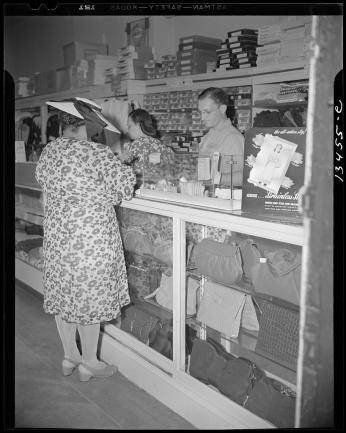
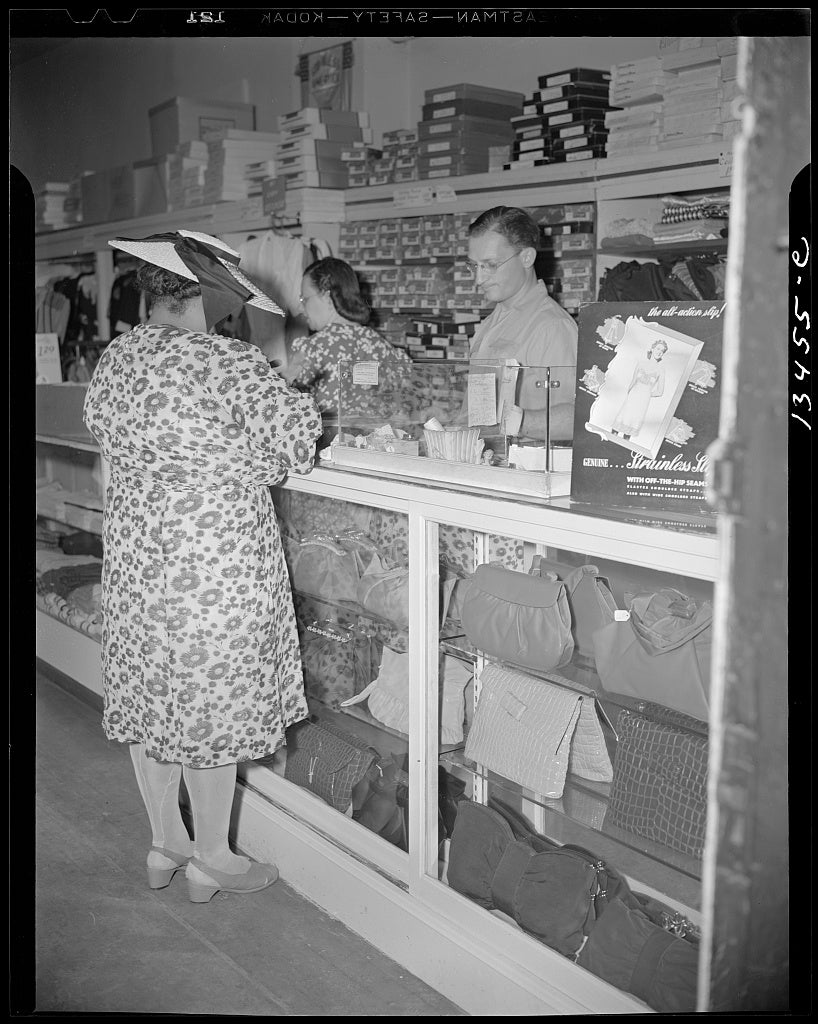
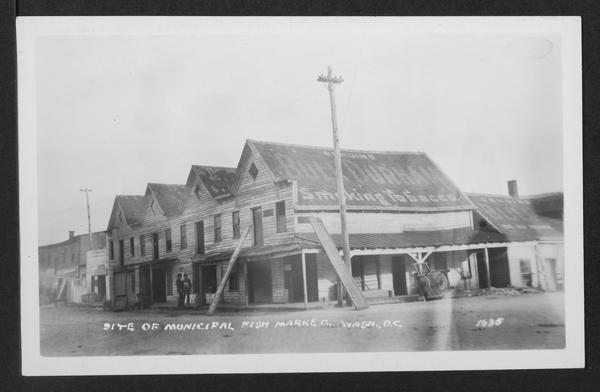
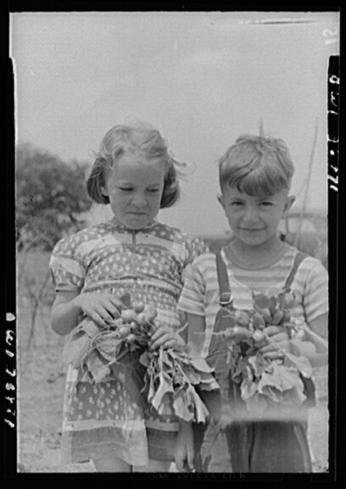
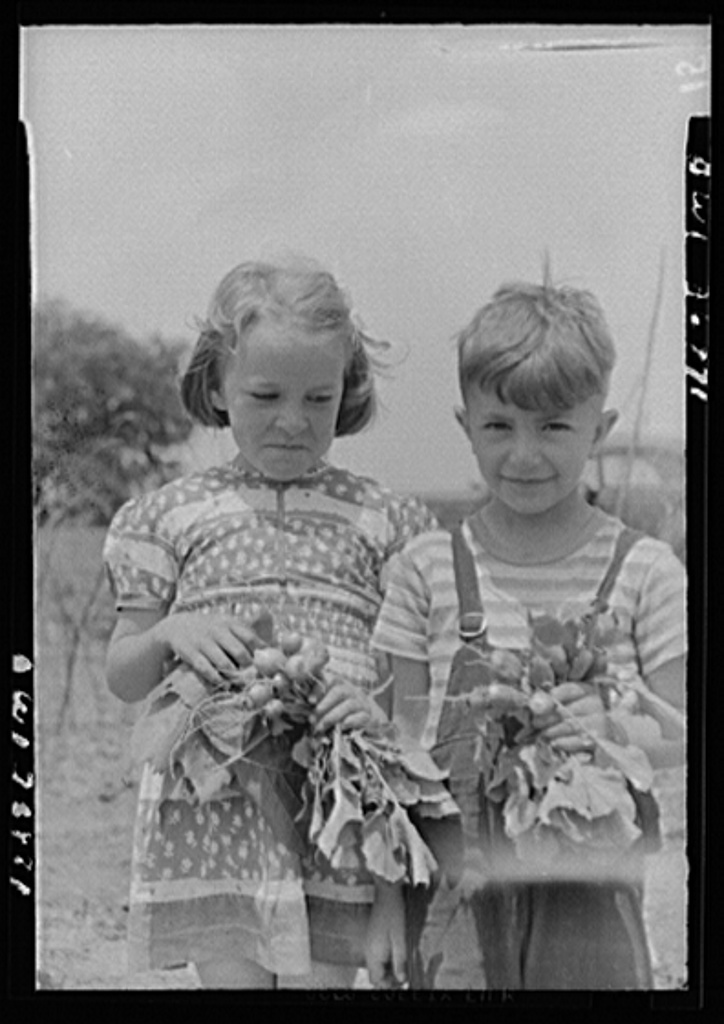

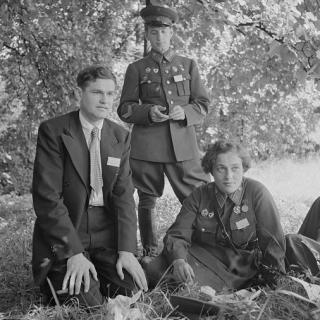
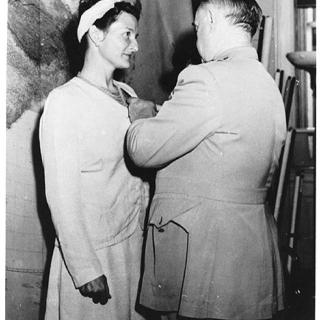
![Sketch of the mythical fuan by Pearson Scott Foresman. [Source: Wikipedia]](/sites/default/files/styles/crop_320x320/public/2023-10/Goatman_Wikipedia_Faun_2_%28PSF%29.png?h=64a074ff&itok=C9Qh-PE1)












